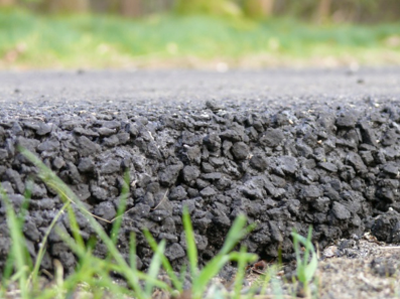An Unbiased View of A1 Professional Asphalt & Sealing Llc
An Unbiased View of A1 Professional Asphalt & Sealing Llc
Blog Article
A1 Professional Asphalt & Sealing Llc Fundamentals Explained
Table of ContentsNot known Incorrect Statements About A1 Professional Asphalt & Sealing Llc The Single Strategy To Use For A1 Professional Asphalt & Sealing LlcAn Unbiased View of A1 Professional Asphalt & Sealing LlcThings about A1 Professional Asphalt & Sealing LlcA1 Professional Asphalt & Sealing Llc for Dummies

The oil in an automobile engine is not simply oil. The REOB contains all the additives that were in the waste oil as well as the wear steels from the engine (mainly iron and copper).
By making lots of blends making use of various REOB samples and different asphalt binders, the variants greatly can be averaged out. Several States gave examples of known REOB composition to TFHRC scientists, who examined the samples to contrast the percentage of added (known) REOB to the located (checked) quantity. The evaluations revealed a comparable portion of included and found REOB.
Unknown Facts About A1 Professional Asphalt & Sealing Llc
They got a frustrating response. The TFHRC scientists examined 1,532 examples from 40 States, one Canadian province, and two Federal Lands Highway departments. They evaluated each sample twiceamounting to even more than 3,000 analyses. None of those States understood that the asphalt they were buying consisted of REOB. One State urged its samples had no REOB.
Of the 1,532 samples examined, 12 percent contained REOB, and some contained appreciably high degrees of it at 1020 percent. The greatest degree was 34 percent in an example from Texas, which TxDOT had actually used in a patching substance. This testing also disclosed the existence of phosphoric acid in 11 percent of the samples, and 2 percent contained ground tire rubber.
Two years ago at TRB's yearly conference, the Federal scientists held an REOB workshop and provided the findings of their laboratory assessments to a standing room-only crowd. Although some agencies do not especially outlaw REOB, they do impose physical tests that preclude its useeffectively a restriction. asphalt repairs. Others do not ban it by specification, but have arrangements with asphalt distributors to prevent the use of REOB
The smart Trick of A1 Professional Asphalt & Sealing Llc That Nobody is Talking About
A handful do allow REOB, some within particular limits. Ohio and Texas limit levels to much less than 5 percent of the asphalt. To establish a reliable examination technique that all States can utilize, the TFHRC researchers set up a round-robin examination strategy. The individuals are 11 State highway firms (Illinois, Massachusetts, Minnesota, Mississippi, Montana, North Carolina, Oklahoma, South Carolina, Texas, Vermont, and Wyoming), 2 independent testing laboratories, the Ministry of Transport in Ontario, Queen's University in Ontario, and internet an Ontario paving professional.
In total, the researchers prepared and shipped 720 blends. The participants are checking the examples individually utilizing the guidelines offered by the TFHRC researchers. The round-robin screening is virtually completed, and TFHRC remains in the process of collecting the results. The result will certainly be a suggested AASHTO examination method that any kind of State can adopt and utilize (what is cold asphalt?).
The pavement with REOB, which is located 0.6 mile (1 kilometer) from the sidewalk without REOB, has similar subgrade, web traffic density, and climate. The segment of Highway655 with 5 to 10 percent REOB revealed significant fracturing. In this instance, the existence of REOB was the identified root cause of fracturing at a reduced temperatures.
"In our experience in copyright, even small quantities of 23 percent can be a problem." Likewise, a section of test sidewalk in Minnesota (MN1-4) located to consist of REOB also split too soon. The sidewalk done well for the initial 3 to 4 years, but then began to crack. This pavement is additionally based on low temperatures.
Some Ideas on A1 Professional Asphalt & Sealing Llc You Need To Know
The tests were not considerable, yet they showed that at levels of 6 percent or more, the tensile strength of the asphalt dropped substantially. At a degree of 3.5 percent REOB, the variation in the physical test approaches was above the result of REOB. It was challenging for researchers to examine whether REOB was present. https://justpaste.it/g23qf.

One binder specification thought about is the distinction in between the reduced temperature level vital requirements temperature level for stiffness (S) in the flexing light beam rheometer and the bending beam of light rheometer creep slope (m-value) noted as Tcritical. 2 independent research study teams, one from AASHTO and the other from the Asphalt Institute, concluded that even more research is required on the use of REOB in asphalt.
Formerly, all asphalt screening measured engineering residential or commercial properties such as rigidity. These examinations do not show what products had been contributed to the asphalt. One example gotten throughout the TFHRC research study had a very strange evaluation. The sample had the following examination results: Superpave PG 64-28 with a heat grade of 67.3 Tcritical on the flexing light beam rheometer was 6.7 levels Celsius.

A1 Professional Asphalt & Sealing Llc Things To Know Before You Get This
These outcomes demonstrate there are weak points in the standard engineering screening procedures that may be manipulated. The manufacturer might have an economic advantage and the product passes all the standard tests, but the product may not be advantageous to ensuring lasting performance. To address this issue and the growth of new asphalt ingredients and extenders, TFHRC is starting a study program to utilize handheld spectroscopic devices, x-ray fluorescence spectroscopy, and Fourier transform infrared spectroscopy to enable evaluations to be done in the field as opposed to having to take examples back to the laboratory.
Report this page